
Strap yourself and brace for an electrifying journey into the domain of the most dangerous sports out there.
These aren’t your typical pastimes; they’re reserved for those with an insatiable hunger for adventure.
But where to come across such thrilling and adventurous moments?
For that, dive along with us into the most dangerous sports in the world and the fearless athletes. From the thunderous beat of your heart, brace yourself to immerse in the spine-tingling thrill of these remarkable pursuits.
WHAT ARE THE MOST DANGEROUS SPORTS IN THE WORLD
Following are some of the most dangerous sports updated list which is very popular all over the world.
40. Buzkashi
Buzkashi, very popular in central-Asian countries but least popular among Western countries, is another very risky and dangerous sport. Often played as a symbol of prestige by a lot of Afghan heads of tribes, this sport involves the dragging of a goat carcass by a number of horsemen toward their arena. Injuries are more usual for the players and spectators.
No weapons are allowed in this sport. The horsemen use the whip to push up the horse, but sometimes they beat the opponent with it as well. Hair pulling and grabbing the opponent from his horse cause a lot of consequent injuries which range from ordinary bruises and fractures to even the death of the participants. This most dangerous sport also has a great political impact on the society.
Injury Matrix:
- Most common injuries: Fractures, concussions, trampling
- Spectator risk: High-often injured in crowd rushes.
- Fatality risk: ~3–5 deaths are reported annually
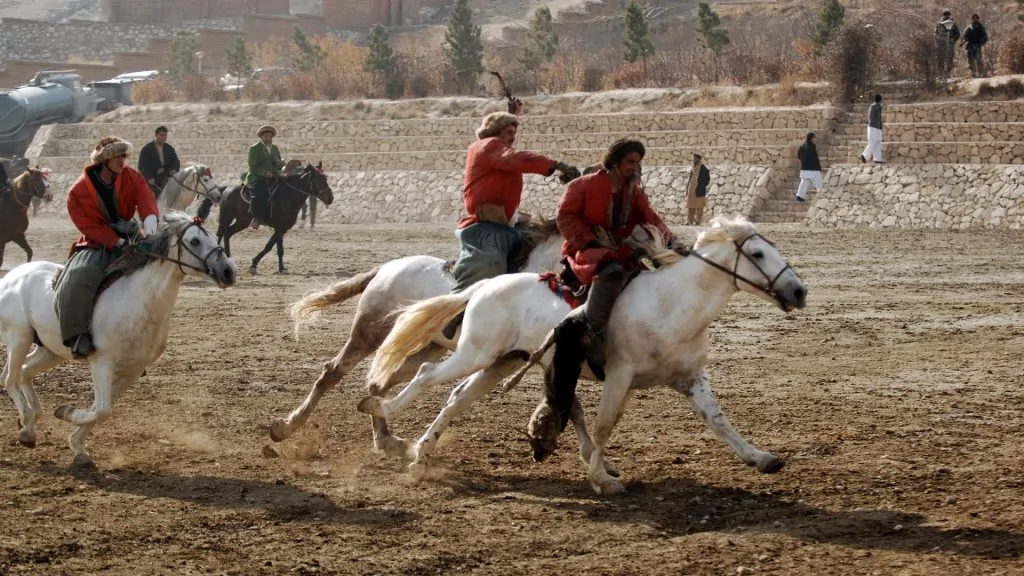
39. Iditarod
Iditarod is also known as the “Last Great Race”. The rough Alaskan ice terrain is always changing its shape across the 1150-mile track that crosses mountains, tundra, and snow forests. The Dog-sled racers face temperatures of minus 50 degrees and strong cold winds. The organizers of this brutal race simply ignore the high count of the dogs that die during the races.
The race participants suffer snow bites, bruised or broken ribs and legs, broken bones, and concussions. Rarely do people finish the race unsheathed. So far only about 700 people have reached the FINISH LINE. Mount Everest has been surpassed by more people.
This clearly shows the toughness this sport has for its performers. Most dangerous sports lovers wanted this thrill.
Injury Matrix:
- Fatalities: ~150+ dogs historically; multiple human deaths
- Common racer injuries: Frostbite, broken ribs, head injuries, concussions
- Race length: 1,150 miles
- Completion rate: ~50% of the participants complete the race
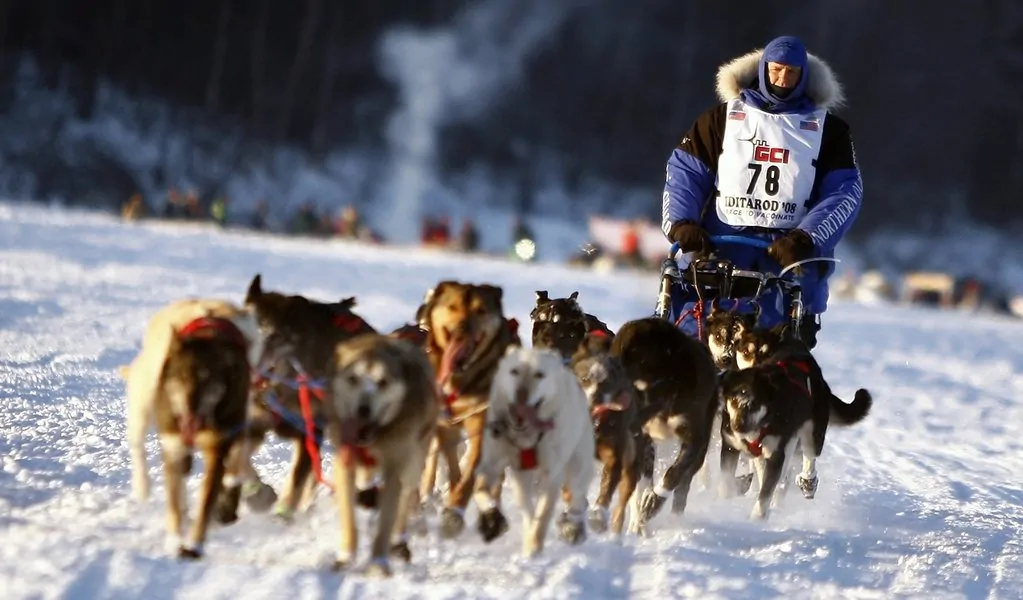
38. Volvo Ocean Race
The Volvo Ocean Race is the longest ocean race and most dangerous sport that covers about 39000 nautical miles in a nine-month period. This is the Endurance Challenge race. The tough and long journey through rough seas and oceans has no match. Participation is only up to 8 yachts.
These pass through the freezing and chilling zones, near huge icebergs, and encounter relentless and horrifying storms just to mention a few hazards. The race is arranged every three years with a new course. The Somalian pirates have posed another possible dangerous obstacle to it. The race organizers are taking all precautions for safety during the race.
Injury Matrix:
- Fatality risk: ~1 death per cycle (crew overboard, storm-related)
- Most common injuries: Hypothermia, broken ribs, concussion
- Crew size: 7–11 per yacht
- Piracy risk: The threat is lower today, but not eliminated

37. Jousting
Another highly dangerous sport is jousting involving two armor-clad opponents charging at each other on horses while wielding 11-foot-long wooden lances. The target is to break the lance on the opponent’s shield on a metal plate fitted to his chest. Moreover, unhorsing is an added thrill and a sure way to rack up points in the contest.
A lot of injuries including back and neck fractures, trampling from the horses, and even deaths do occur during this sport. King Henry II of France is the most prominent figure victimized to death while enjoying Jousting in 1559. So, one has to be pretty careful while playing this dangerous sport.25
Injury Matrix:
- Common injuries: Spinal fractures, concussions, horse trampling
- Historical death example: King Henry II of France (1559)
- Protective gear today: Modern padding reduces but doesn’t eliminate risk
- Estimated annual participants: ~5,000 globally (reenactment leagues)

36. Street Luging
Ever wondered what it feels like to fly down a road at 90 miles per hour? Street luging is the extreme sport where you can do just that. Imagine skateboarding but lying down on a specialized board, known as a “luge”, as you race downhill at insane speeds. It’s like sledding on pavement with just your body between you and the road.
But wait, there’s more! This sport wasn’t just born out of nowhere. It was skateboarders who first discovered that lying down on their boards could send them rocketing at even greater speeds. And they were right, just ask Damian Andrew, who set the Guinness world record at a mind-blowing 101 mph in 2017 for a gravity-powered street luge.
However, it’s not all fun and games. Street luging isn’t exactly known for its safety. Riders must do full protective gear including leather suits and motorcycle helmets. They must wear this to shield themselves from potential collisions and the ever-present danger of not being seen by oncoming traffic. Let’s not forget, these boards don’t come with brakes! If you need to stop, you’ve got two options: drag your feet or, well, hope you don’t crash into something. It’s adrenaline-fueled madness at its finest!
Injury Matrix:
- Top recorded speed: 101 mph (Guinness World Record)
- Injury rate: Approximately 60% of riders will sustain some injury each season
- Most common injuries: Road rash, broken collarbones, concussions
- Average medical cost per crash: $8000 – $15000 (U.S. ER data)
- Fatality rate: Estimated mortality rate of 1.4 deaths per 1,000 participants per year
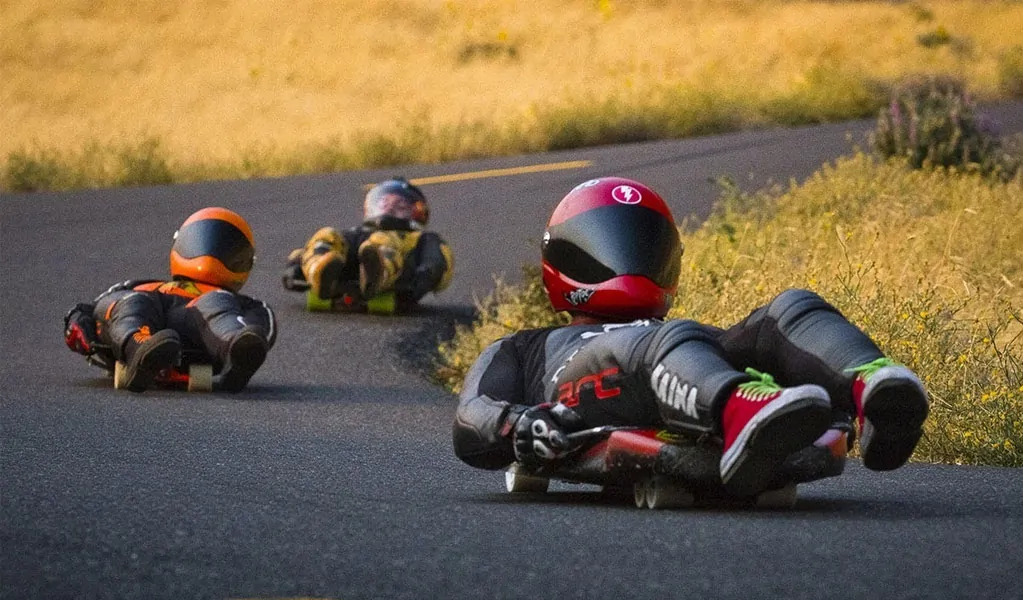
35. Helicopter Skiing
Helicopter skiing is a dangerous variant of regular skiing that originated from the Canadian Snowcapped Rockies in the mid-1960s. Thrill seekers use the helicopter to access the carefully recommended snow-covered mountains. From where they are to enjoy their skiing down the snowy slopes. The world’s dream Heli-skiing area is Canada’s British Columbia with 11 meters plus of super dry snow, steep tree-lined pitches, and wide open glacial bowls.
These most dangerous sports allow the skiers or snowboarders to enjoy the natural mountain environment with the infinite joy of Heli-skiing and the minimum risk of injuries involved in this activity. Muscular and skeletal injuries do occur during this activity which may even lead to the skier’s death. In short, if performed with care, this dangerous sport may be converted into a jubilant adventure imparting a thrilling pleasure to its performer.
Injury Matrix:
- Annual fatalities (global): ~25 skiers
- Most common injuries: Avalanches, fractures, hypothermia
- Average cost: $1,200 per heli-drop

34. Base Jumping
This is the sport of sports to participate in. The person has no control or checks on his performance. It all depends on the parachute. Jumpers are simply blind-betting their life on whether it opens or not. Either the jumper will land safely or embrace his death otherwise. Apart from being very risky, this sport appeals to the youth a lot. But at the same time, Base Jumping has consumed over 180 lives since its start around 1980 which is why it is the most dangerous sports
Another very vast but Dangerous aspect of base jumping is the use of a wingsuit while performing the skill. It makes the jumper more attractive and compact but, unfortunately, it is causing more deaths than otherwise. The reasons behind this fact are the lack of know-how about it, the over-confident approach while wearing it, and the unnecessary mishandling of this suit on the part of the jumper. A little bit more awareness and carefulness may make these most dangerous sports safer a lot.
Injury Matrix:
- Fatality rate: 1 death, 2,300 jumps
- Most common injuries: Parachute failure, blunt trauma
- Annual global deaths: ~20–30
- Unique stat: Base jumpers are 43 times more likely to die than skydivers.
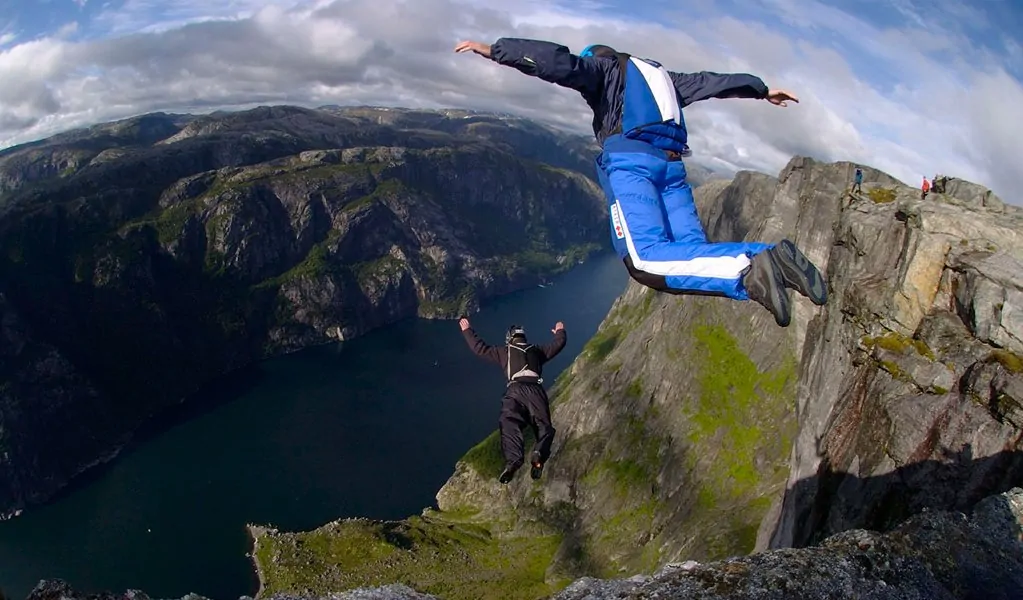
33. Cave Diving
The diver dives down about 100 feet into an unknown pitch completely at the mercy of the conditions underneath the surface. The base jumper’s safe landing depends on the parachute opening while the cave diver’s return depends upon what he discovers below. These most dangerous sports may result in spinal cord or brain injury along with the chances of heart or lung failure. Reportedly over 500 have died since the first such dive in 1960.
Injury Matrix:
- Global fatalities since the 1960s: 500+
- Most common causes of death: Running out of air/disorientation
- Survivor injury rate: High spinal injury, hypothermia
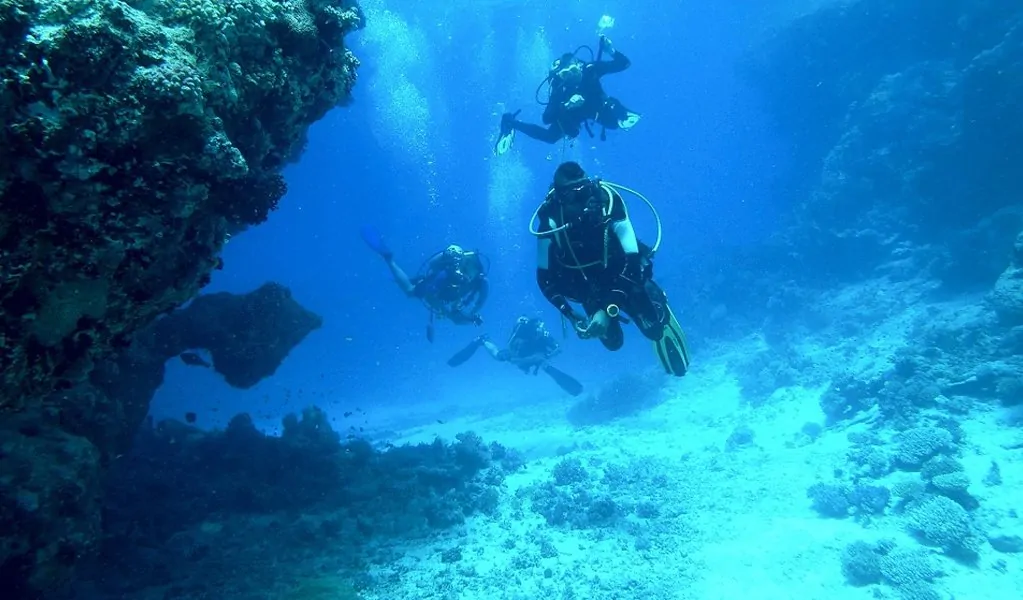
32. Lawn Bowls
Lawn Bowls is a really popular game but the most dangerous sport as well. This game is the highest death claimer worldwide. The players are deeply into the game till their last breath. They stop at nothing short of victory, in their pursuit. Those who escape death end up with bruises, torn knees, broken hips, and bone fractures. The game generates extreme stress resulting in strokes and even heart attacks. This most dangerous sport is very enthusiastic and produces nail-biting results whenever and wherever played.
Injury Matrix:
- Median age of participants: 64 years
- Most common injuries: Falls, hip fractures, strokes while playing
- Annual emergency visits (UK & AUS): ~4,000 total
- Fatality link: High risk of cardiac arrest while playing the sport for seniors

31. White Water Rafting
It’s one of the very thrilling water sports, in which the rafter has to face a lot of risks and dangers. These include drowning, hypothermia causing an increase in the blood pressure, heartbeat, and breathing rate, equipment failure, dangerous water conditions, sunburns, etc. One has to be very careful while enjoying this sport. It was introduced in the late 70s. Occasionally, casualties also result due to severe water conditions. Only a healthy and safety-conscious rafter can enjoy these most dangerous sports to the maximum.
Injury Matrix:
- Fatality rate: About 0.55 deaths per 100,000 rafters, annually
- Most common injuries: Drowning, hypothermia, dislocated shoulders
- Hospitization risk: Higher for inexperienced rafters
- Participation (U.S.): ~2.9 million annually
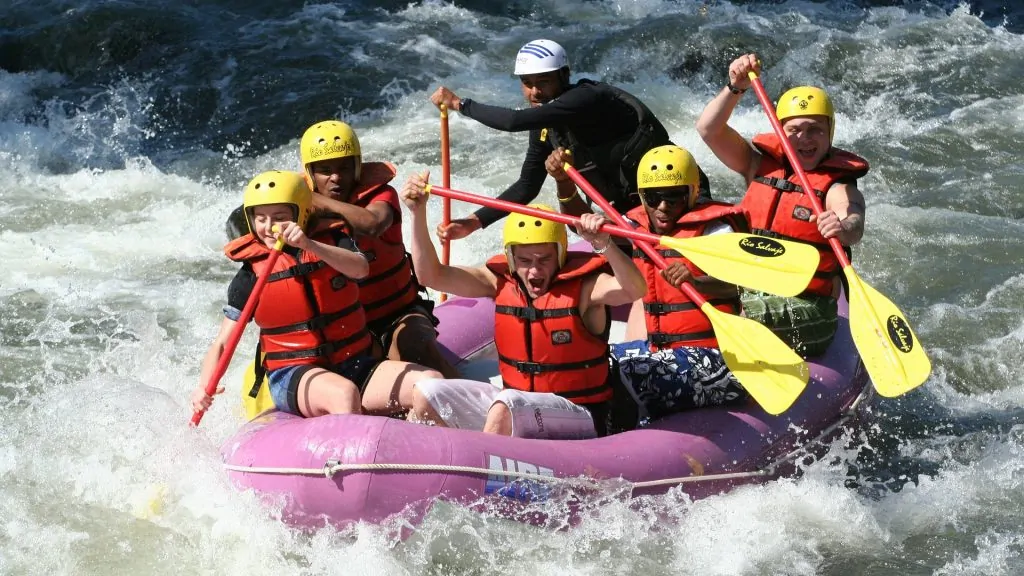
30. LUGE
The Olympic Games include a lot of fantastic games that fascinate the players as well as the spectators. Among these, a dangerous sport exists under the name of Luge. Here, the athlete races down an icy, high-banked track at about 90 mph or 140km/h and proves himself a really brave person.
At the last corner of the race, the Lugar has to bend or adjust his body at an angle of 270 degrees at a speed of 140 km/h. Here, he must have to be dead careful because he will lose his life due to a hairbreadth mistake. Very serious traumatic brain injuries and even deaths have occurred due to severe accidents in this activity.
Injury Matrix:
- Olympic luge crashes (2018–2022): 12 major incidents recorded
- Common injuries: Traumatic brain injury, spinal trauma
- Fatalities: Average 1-2 per Olympic cycle globally
- Top speeds: 140 km/h (87 mph)

29. High Altitude Climbing
The high summits have always been challenging like k2 mountain elevation or climbing Mount Everest and require extreme guts and committed determination to surpass the top 10 highest mountain peaks. There is a vast account of the k2 summits and expeditions. Besides the usual climbing dangers, people often have to pass over frozen dead bodies on the way, on steeps, on valley glaciers, and in the snow-rivers. Up there, every step is final as gravity also works against climbers.
When you reach a high altitude you can enjoy your success. Remember your work is only half done, for the return will not be an easy trot. UV radiation can harm your eyesight and you’re this very accomplishment may make you careless. One can never think of medical aid, physical rescue, or even helicopter assistance which is always uncertain under a fast-changing climate. The fatality rate is declining but is around one dying for every six summits. So this very popular most dangerous sport is a real test of the climber’s real physical and mental strength.
Injury Matrix:
- Fatality rate (Everest): 1.1% of people who reach the summit die (compared with 6.5% in the 1990s)
- Most common injuries: Frostbite, hypoxia-induced brain swelling, fractures
- Average rescue cost: $40,000 – $70,000 per evacuation
- Global summit attempts annually: ~2,000 climbers

28. Bullfighting
Bullfighting is a dangerous sport that involves a rider who gets on a bull and tries to stay mounted while the animal tries to resist the rider. To receive a score, the rider must remain on top of the bull with the use of a hand holding a rope tied behind the bull’s front legs.
This sport involves a bull, and bulls are big and scary, no matter where you face them. Neck and head injuries, along with bone fractures, are common in bullfights. Bull riding, due to its level of difficulty, definitely deserves a place among the most dangerous sports.
Bullfighting is a dangerous and extreme sport. You can get out of the field with your legs or take your next ride by ambulance! This is because one of those bulls, weighing up to 1800 pounds, can crush a fallen rider under its weight. And you can imagine the wounds!
Injury Matrix:
- Annual matador injuries (Spain & Mexico): ~3k
- Fatality risk: 1–2 matadors killed per decade
- Most popular injuries: Goring and fractures

27. Rock Climbing
Rock climbing is a very tough and courageous sport but carries a high death toll rate. The spirits and strength are at the optimum level when ascending. These are at the lowest level when descending. The slippery tracks, climatic changes too much, and fatigue make it hazardous to retrieve. Medical help is almost impossible up there while helicopter assistance is always uncertain.
The insurance classification rates this sport at category 5 which is next to naked knife sports. About 20 lives are taken each year in the U.S.A. Just imagine how many could be there across the globe. Nevertheless, this is one of the most dangerous sports in the world. Sport with the most deaths.
Injury Matrix:
- Annual U.S. injuries: ~7,000 (emergency-treated)
- Fatalities: ~30 annually in the U.S. only
- Most common injuries: Falls, rope failure, hypothermia
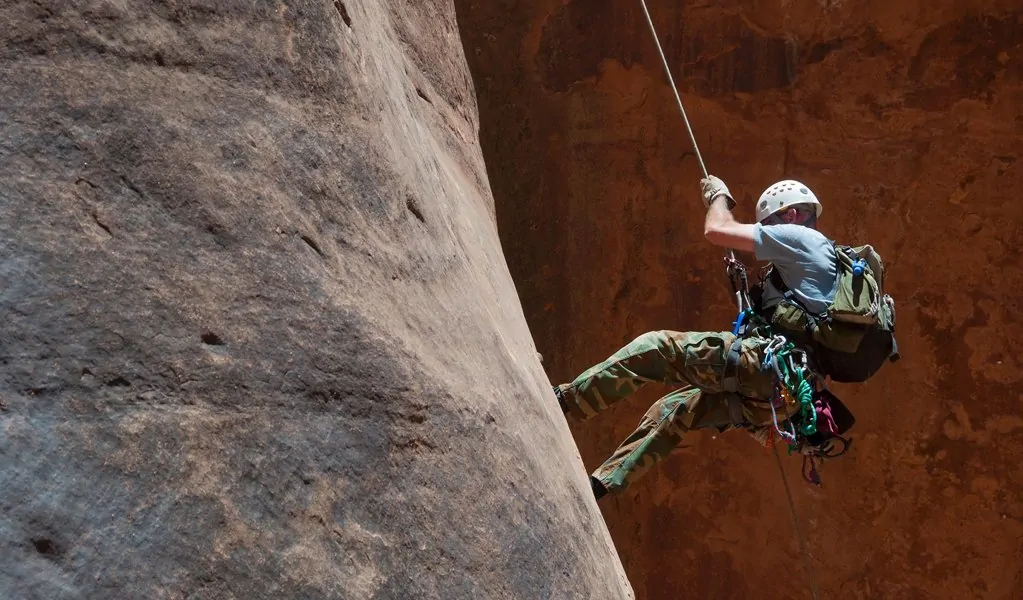
26. Big Wave Surfing
Wave surfing is great fun and gives unlimited joy. Surfers with a lot of guts and a high level of alertness can only risk riding the giant 50-foot water walls. These monster waves can offset life for miles deep into the coastlines. The huge force can kill the surfers or bury them deep underwater to drown or smash into hidden rocks.
The board hinge releases forcefully if stuck. It can bulldoze complete house structures in seconds. Hazards increase when sharks get on the way. People regard big wave surfing as the Most Dangerous Sport for bikini-clad girls and their rescuers when wave intensity persists. Most of the rescued survivors stay paralyzed for months, if lucky to have avoided the sharks.
Injury Matrix:
- Annual fatalities: ~10–15 globally
- Most common injuries: Drowning, fractures, shark attacks
- Wave force: Equivalent to a small car collision
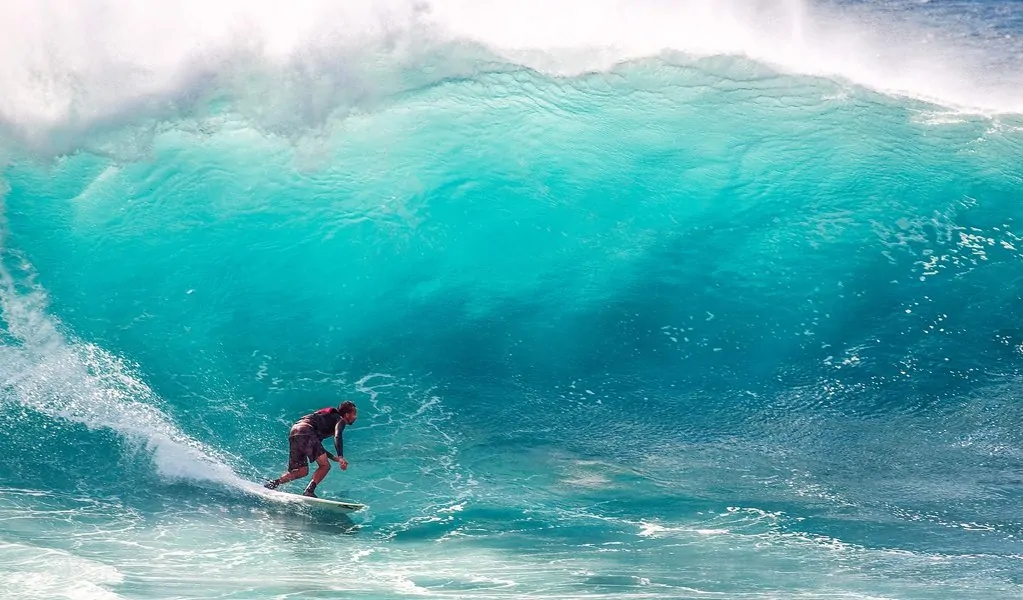
25. Boxing
No one can reasonably argue that boxing is not the most dangerous sport. Most boxers end up with some type of enduring injury, be it vision or coordination issues, discourse obstructions, or even brain damage. Some of them have been disabled in wheelchairs.
Boxing has to do with violence, where the only objective of the participant is to hit his opponent; not surprisingly, this is not an injury-free sport. Statistics reveal that 90% of boxers suffer brain damage during their career. In any case, with the privilege of defensive rigging, you can limit the danger of injury.
Approximately 10 people die each year in boxing from head and neck injuries sustained. The number grows much more when you consider the number of people who died after a prolonged race of hitting their heads.
Injury Matrix:
- Brain damage prevalence: ~90% of pro boxers exhibit symptoms
- Annual fatalities: ~10 globally, competition-induced injuries
- Most common injuries: Concussions

24. Cheerleading
The past few decades have seen the development of a new joyful but risky trend in sports. The morale lifting is by dancing girls beside the field lines. They jump into action at the slightest advantage taken by their team. These girls in skimpy outfits cannot feel the danger instantly.
All happens in seconds when team players chasing the ball suddenly change direction, or the fast superstars take over by their sheer body momentum. They come banging into these fragile jumping dolls completely unprotected to bear such impacts. The result is obvious. The whole glamour vanishes away instantly by the sudden onrush of misery in this most dangerous sport. Broken legs, ribs, spinal injuries, and bruises are the most common.
Reportedly about 20000 cheerleading girls suffer injuries every year worldwide. More safety is crucial for them for injury prevention. There are many arguments is cheerleading a sport?
Injury Matrix:
- Annual U.S. injuries: ~27,000 (youth + competitive)
- Most common injuries: Concussions, fractures, sprains
- Fatalities: Infrequent, but occur from falls/stunts
- Unique stat: 66% of all catastrophic female high school sports injuries are the result of cheerleading.

23. Bull Riding- Most Dangerous Sports
Bull riding is associated with Old Western Ranching activities. In the earlier fairs, some sort of cattle/bull gymnastics laid the basis of the bull riding that we see today. This sport is painful for the animal as its genitals are tied to make it more ferocious.
The bull exhausts its energy by hurling its 1700 lbs. weight twisting, leaping, and tossing the rider, at times, 10 feet up in the air. The rider’s abilities reflect how he manures his fall whether on the animal or on the one-inch layer of dust cushion on the ground. Consider being the most dangerous sport in the world.
The ultimate fate of the rider depends on the posture of the landing. He is lucky to not hit the ground flat or get locked on the horns for another big toss. At times, the bull gives a horrible chase when the rider lands upright within its reach.
The breaking of jaws, ribs, and collarbones is quite common. The other participants help divert the bull’s attention, otherwise, this sport would involve much bloodshed for the riders. In short, this is a fantastic most dangerous sport that keeps the rider alert and on the psychological guess to enjoy it to the maximum ever at the cost of his life.
Injury Matrix:
- Injury rate: 32 injuries per 1,000 trips
- Most common injuries: Concussions, broken ribs, collapsed lungs
- Fatality risk: 1 death per 60,000 rides
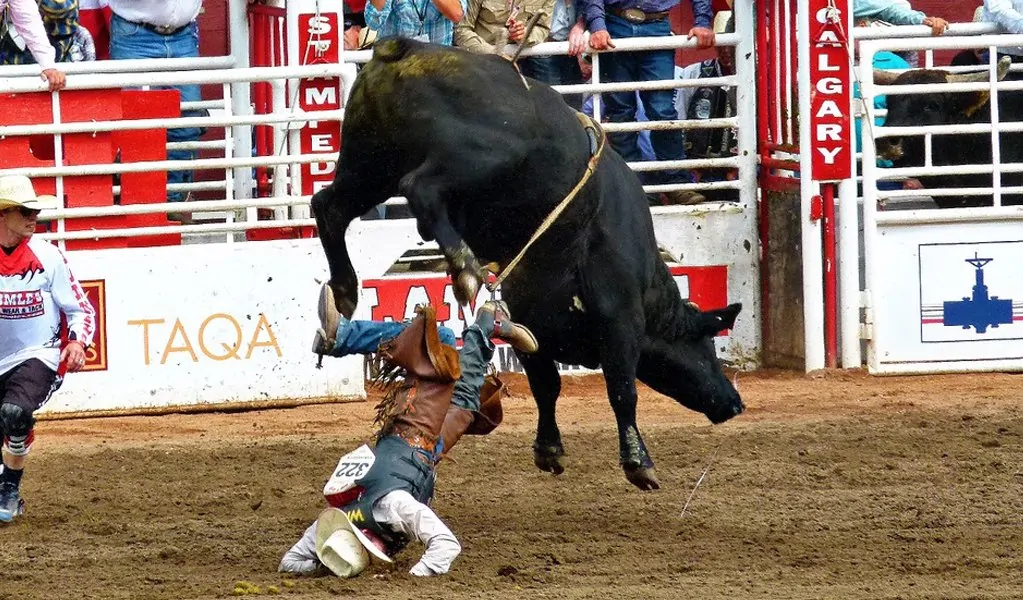
22. Mixed Martial Arts
The most beautiful and fantastic sport on the earth is mixed martial arts (MMA). It gives a real thrill to watch two highly skilled fighters showing MMA’s techniques in the cage. But, at the same time, MMA is an equally MOST DANGEROUS SPORTS as well in which the main objective or target of the player is to hurt the opponent to the maximum.
A lot of injuries or even casualties may occur at any time not only during the fight but also during the training. The training sessions of MMA are perhaps the most arduous physical endeavor in the world. Muscles pull, ribs fracture, bones break, and head or skull ruptures quite often even during training sessions. These most dangerous sports can never be safe and secure because they will lose all their charm if a fighter does not hurt his opponent.
Injury Matrix:
- Injury rate: 228 injuries per 1,000 fight exposures
- Most common injuries: Facial fractures, concussions, and dislocation of joints
- Fatality rate: 7 confirmed deaths in sanctioned events since the 1990s
- Average recovery time after a fight: 3–6 weeks for moderate injuries.

21. Pole Vault
Another sport that appeals to the youth a lot is the one with an athlete having a long flexible stick in his hands and running at full speed towards a 20-foot high bar which he has to jump over. This is, undoubtedly, the most dangerous sport which involves you first as a sprinter and an athlete and then as a gymnast when you jump over the bar keeping you well-poised and well-aware of your body control and spatial status.
At the same time, this sport also involves a lot of risks of head, spine, neck, and pelvic injury. One safety measure has recently been taken by increasing the vaulter’s landing pad in dimensions. This measure has reduced the injury rate a lot while enjoying these most dangerous sports.
Injury Matrix:
- Annual U.S. high school injuries: ~2,500 (NFHS data)
- Most common injuries: Concussions, fractures, spinal trauma
- Safety upgrade: Landing mats reduced accidents/casualties by 40% since the 1990s

20. Hockey
What can you say about the hockey game? It is cold and fun to watch. This could be the only sport without a fight in which you always run the risk of being hit. Despite a large amount of filler used by players, they still figure out how to crush their countenances and break bones in each game. Afterward, they grin at the press after their ridiculous faces fill the game’s pages.
And to your surprise, there was a pair of blades attached to each player’s feet! Therefore, hockey, in addition to being a sport with known risks, may be greater than the possible rewards. Head injuries like concussions occur when players come in contact with other players, boards, slip, or accidentally hit.
Injury Matrix:
- Annual US injuries: ~23,000 (CDC NEISS)
- Prevalence of concussion: 10.5 per 10,000 athlete exposures
- Dental/facial trauma: 31% of all hockey-related injuries are to the face.
- Fatality rate: Quite rare, but on average, 1 to 2 deaths annually (cardiac events or neck injuries)

19. Horseback Riding
The most dangerous sport of riding on a horse’s back itself gives you more pleasure and diverts your emotions toward freedom. Your senses and body become more agile, able to adjust start to discover the balance of your physique against the gravitational force of the ground. You can never imagine how the weight of this giant animal can harm you while riding. Sometimes your first five minutes of a ride affect your whole life by having serious injuries.
For riders, it’s a challenging job in terms of commitment, time, patience, and most importantly building a bond with your horse. Build a good relationship with your animal and don’t go against him. Different horse types also have their own temperaments and strengths, so understanding them is key to safer riding. Sometimes an experienced person is paralyzed when their horse kicks them down.
Just like horseback riding, other sports cheerleading, gymnastics, rugby, and bull riding are extremely Most Dangerous Sports that put your life at risk.
Injury Matrix:
- Annual U.S. injuries: ~50,000 (CDC)
- Rate of serious illness: More than motorcycle crashes
- Most common injuries: Head injuries (45%), spinal fractures
- Fatalities: 100+ annually worldwide
- Special stat: Head injuries are responsible for 81% of horseback riding deaths.
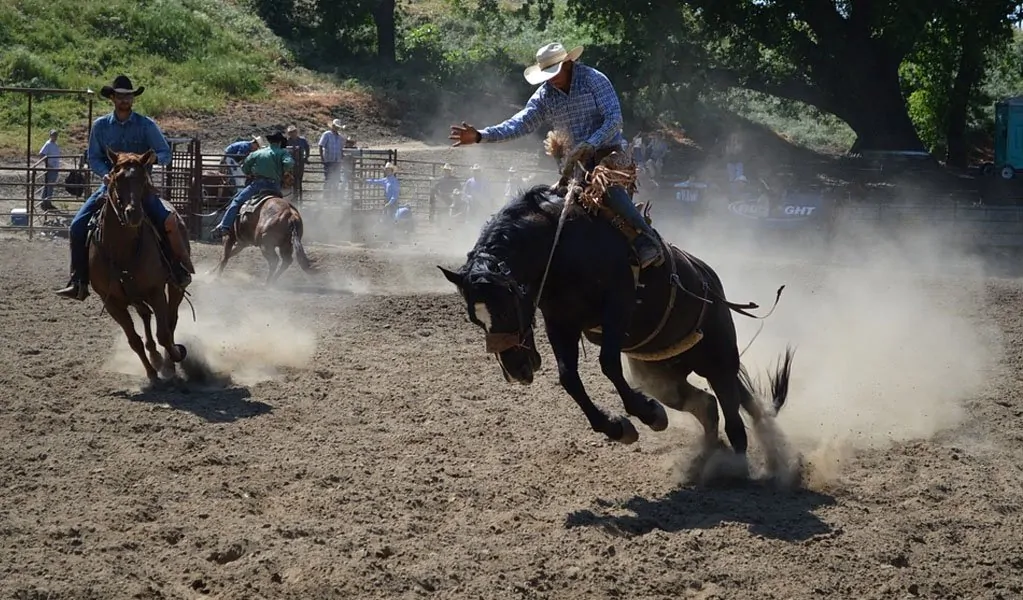
18. Snowboarding
A good combination of skiing, surfing, and skateboarding is another most dangerous sport, snowboarding. It has become a very popular winter sport over the last two decades. Like all other dangerous sports, it also involves the risk of injuries. Snowboarders often get their wrists and ankles injured.
Sometimes, their major organs/areas are badly hurtful causing death. Using a helmet and other protective gear can prevent these injuries. Also, you may use your heels or toes to control your board instead of putting your whole weight on the board which will make you unbalanced. Always try to keep your center of gravity over the middle of the board and keep your knees bent so that you may keep enjoying your snowboarding.
Injury Matrix:
- Annual injuries (U.S.): ~97,000
- Most common injuries: Wrist fractures, concussions
- Fatalities: 40+ annually worldwide
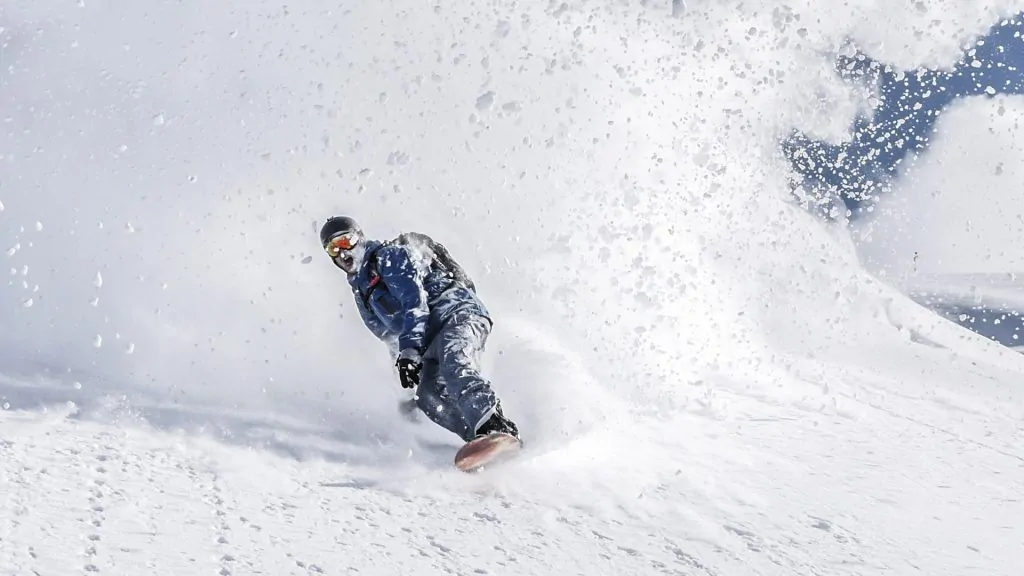
17. Rugby
The world’s roughest and most brutal contact sport has the least protective gear. It is regarded as the maximum injury – prone game. The vicious tackling produces far more broken bones, torn muscles, and concussions than even martial arts. The totally absorbed players don’t stop till exhausted by injuries. The flow and rhythm once established can hardly be stopped. This is the beauty of this most dangerous sport, but all this may also prove quite lethal sometimes.
Injury Matrix:
- Annual U.K. injuries: ~200,000 treated
- Most common injuries: Concussions, broken bones, torn ligaments
- Fatalities: 4–6 annually worldwide
- Unique stat: Rugby players suffer 3x more concussions than American football players per exposure.

16. Baseball
Two teams of nine players play basketball with a bat and ball in a field, positioning it among the most hazardous games. Although it may seem like a safe, slow, and contactless sport, it is extremely dangerous. And sure, injuries do happen. The arms break, the knees twist, and even the bones break.
When a baseball is hit by a bat, it can increase in speed to more than 100 miles per hour. Players hit in the head by baseballs have suffered significant brain damage and other serious medical complications. A noteworthy number of wounds occur due to the repetitiveness of the game over and over, which can provoke shoulder precariousness, tendinitis, and joint irritation.
Injury Matrix:
- Annual U.S. injuries: ~114,000 (NEISS)
- Most common injuries: Shoulder tendinitis, concussions, fractures from pitches
- Fastball speeds: Exceed 100 mph, leading to significant damage risk

15. Gymnastics
Though very charming and appealing outwardly, gymnastics may also prove the most dangerous sport at times. It requires a lot of practice and stamina to be a good gymnast. The balance, strength, flexibility, and control of a gymnast is always superb. The body shape of a gymnast is in the phase of natural perfection but it may get injury if there is a slight mistake or carelessness on the part of the performer.
Wrist and spinal fractures, ankle sprains, and neck and head injuries are quite common in gymnastics. Only a gymnast can understand the real spirit and passion behind or within gymnastics. In short, apart from the risks involved, gymnastics is an excellent sport for youngsters and one of the most dangerous sports.
Injury Matrix:
- Annual U.S. injuries: ~25,000 (youth + competitive)
- Most common injuries: Wrist fractures, spinal injuries, and concussions
- Deaths: Rare, but catastrophic injuries documented
- Unique stat: Of all youth sports, gymnastics is the #1 to cause growth plate injuries.

So, there you have it! These sports are not just physically demanding, they’re downright dangerous. But for those who crave the rush, the risk is all part of the fun.
14. Cliff Diving
Highly most dangerous sports also include cliff in because it can never be called safe no matter what height you choose to dive. This is because it puts tremendous stress on your body even if you dive into a water body from a height of just 15 to 20 feet. Entering into the water feet first in a vertical line may reduce the stress a great deal which otherwise in a horizontal position feels like hitting a concrete. World High Diving Federation recommends a maximum height of 20m for the non-professional divers whereas professionals may jump from up to 148 ft because of high-level training and practice, but even they can sustain injuries. Cliff divers may experience dislocated joints, slipped discs, compressed spine, broken bones and even death.
Injury Matrix:
- Recommended amateur diving height: ≤20m (World High Diving Federation)
- Fatality risk at 30m+: ~1 in 50 dives can lead to major injury
- Most common injuries: Spinal compression, dislocation, concussion
- World record height dive: 58.8m (Laso Schaller)
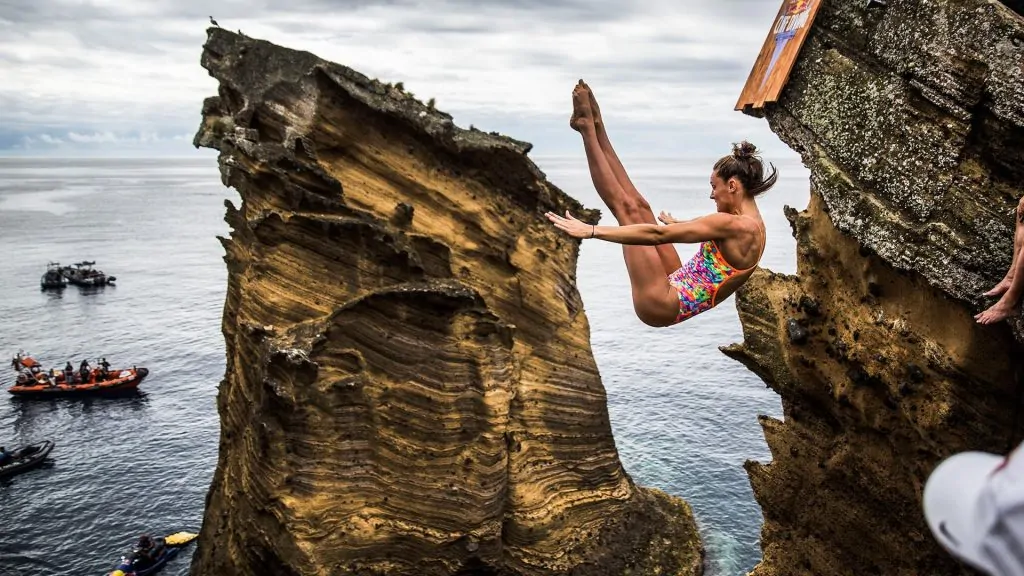
13. Swimming
Swimming is an individual or team sport with events in freestyle, back, breaststroke, and butterfly.
All sports carry inherent risks, but swimming is the only one where you put yourself in danger when entering the sports field. Humans are not ideally designed to breathe in the water. Even experienced swimmers can be in danger in the pool. But it is not drowning that causes most swimming injuries: it is the repetitive strain of doing the same strokes for miles and this is the main risk for competitive swimmers. There were 202,051 injuries in total in 2010.
An Australian study followed 5 different clubs for 12 months, with 74 swimmers participating in a self-reported study. 38% of swimmers reported missing training due to a shoulder injury. 22% had injuries that lasted more than two weeks. Injury rates went from 0.2 to 0.3 per 1000 km.
Injury Matrix:
- Annual U.S. swimming injuries: ~45,000 (NEISS)
- Most common injuries: Shoulder impingement, tendonitis, concussions (poolside)
- Number of deaths by drowning (U.S.): ~4,000 (CDC)
- Participation: 27 million Americans swim at least once a week

12. Soccer
Soccer is a game known for its distress more than its players. As it is a low-scoring sport, players take this sport very seriously and the fact that it is the most mainstream sport around the world.
Soccer is classified as a dangerous sport due to the frequency of injuries. Statistics state that there is a 75% chance of having a concussion in this game, compared to 5% in other games. People chasing just one ball and often throwing with one or two feet to attack their opponents is an activity that often goes wrong. Besides, leg muscles and ligament injuries are very frequent. Still, all of this doesn’t make players compete fiercely in soccer leagues around the world.
Every player is aware of the risk to their body and brain throughout their career, but the sheer love for the sport and the massive following of fans keep the fire alive in them.
Injury Matrix:
- Annual U.S. injuries: ~218,000
- Most common injuries: ACL tears, concussions, sprained ankles
- Global participation: 265 million players

11. Longboarding
This is a type of skateboarding using a longboard instead of a regular skateboard. Longboarders often practice on open roads which increases the chances of injuries due to various obstacles in the form of moving vehicles and light poles coming on the way. Longboarders often suffer from head injuries and bone fractures including intracranial hemorrhage.
The use of the helmet may reduce the injury rate to a great extent. This sport may also cause traumatic brain injury, which may even result in the longboarder’s death. Skateboarding is a bit less dangerous than most dangerous sports because they use a regular skateboard in place of a longboard.
Injury Matrix:
- Annual ER visits (skateboarding/longboarding): ~98,000
- Most common injuries: Head trauma, wrist fractures
- Fatality risk: Higher than regular skateboarding due to open road use

10. Isle Of Man Tourist Trophy, Isle of Man, U.K.
The high-speed motorcycle race runs along the narrow pathways, streets, and stone-lined tracks of the 33 x-13 miles island. The original track was designed for bicycle racing in 1907. Later on, motorcycles were introduced. The modern fast racing machines have made it very hazardous as the old-fashioned tracks cannot accommodate the super speeds and this is why about 200 racers have lost their lives so far, and become the most dangerous sports
The scintillation and jubilation it imparts is the real charm of this most dangerous sport, though very fatal at times as well.
Injury Matrix:
- Fatalities since 1907: 267 riders (as of 2024)
- Annual deaths: 1–5 per year
- Most common injuries: Multiple fractures, TBIs

09. Macau Grand Prix, Macau, China
There are two races and over 300 participants attend these events. The motorcycle event was initiated in the morning. The car race takes place in the evening. The tight city roads form the racetrack that involves extra thin turns making the whole affair most Dangerous Sports. Even warm-up sessions can cause death. This charming and attractive sport is a real ditch inwardly. It allures the drivers to get underway but gradually takes them to the worst and may in their death.
Injury Matrix:
- Annual deaths: 1-2 riders/drivers, on average
- Most common injuries: Spinal fractures, concussions
- Participation: 300+ drivers and riders eacdowmh year

08. BAJA 1000 (Mexico and California)
The dune buggies, motorcycles, and hundreds of non-conventional vehicles experience a 24-hour dune bump ride that includes numerous blind turns, channel crossing, wild terrain, and unlimited thrills of the rugged and unfriendly track that stretches across 1000 miles. The cheering viewers also increase the menace by throwing objects on the track course.
The film “Dust and GLORY” illustrates the horrors faced by the racing drivers and their companions. The few surviving vehicles and humans show signs of an extreme shake-up to an almost-breakup condition. This most dangerous sport not only tests the physical strength and stamina of the driver but also his mental endurance and tolerance towards the nuisance he passes through.
Injury Matrix:
- Fatality risk: ~1 – 2 racers die per year
- Most frequent injuries: Broken bones, concussions, and rollovers
- Participant vehicles: 250+ (cars, motorcycles, trucks)

07. 24 Hours Of Le Mans, Le Mans, France
Le Mans is the most dreadful of all the car races in the world. This race was initiated in 1923. It has claimed over 130 deaths so far. The race strategy stresses the high speed and the number of miles each driver travels in 24 hours. Track-rounds are of lesser consideration.
The winners are classified into different categories. In 1955 a Mercedes-Benz driver Pierre Levegh crashed his car into the spectator’s stand killing himself and 83 visitors, extraordinary high speed enhances the chances of a high death toll rate. In spite of that, a large number of spectators still come crowding to watch this race and the most dangerous sport.
Injury Matrix:
- Total fatalities since 1923: 135+ drivers and spectators
- Most infamous crash: 1955 disaster (84 spectators died)
- Modern safety: A big decrease in deaths, but a bit of risk persists

06. NASCAR and Motocross
NASCAR (National Association for Stock Car Auto Racing) is all about the roar of engines and the blur of cars zipping by at over 180 mph. It comes with the thrill of competition but with high speeds comes high risks. NASCAR has made significant strides in safety over the years. It introduces measures like flame-retardant suits, kill switches, and the HANS device, protects driver’s necks in crashes. Yet, the danger is ever present no matter whether it’s from high-speed collision or by sitting in a race car for hours.
Motocross takes the thrill of racing to dirt tracks where riders navigate rough terrain and high jumps. Motocross racers are even more vulnerable while they don’t hit the same speeds as NASCAR drivers. With less protection between them and the ground, a crash can be catastrophic. If you’ve got nerves of steel and a love for dirt, this sport is calling your name.
NASCAR:
- Historical fatalities: ~129 total since inception (last Cup driver death: 2001)
- Concussion incidence: ~6-25% across series
- Common injuries: Concussions, fractures, burns
- Fatality rate: Now extremely low due to HANS, SAFER barriers, redesigned seats
Motocross:
- Injury incidence: ~94 injuries per 1,000 competitors (~ 9-13% per event)
- Most common injuries: Upper-limb fractures (~50%), spinal fractures (~6%), concussions (10-20%)
- Fatality risk: Moderate – mainly from special or head trauma
- Global Participation: ~7 million active riders.

05. Football
Football is a sport with two teams having goals at each end. Also, it is the definitive sport that combines speed, strength, planning, and teamwork.
Of course, like any other form of contact, injuries and even accidents are sometimes inevitable. First, the usual injury to a football player is a ruptured cruciate ligament and other knee injuries, sprains, fractures, and bruises. This happens not only among professionals and has a tangible impact on future life. Second, the problem with football is a concussion: 8% of players win this dangerous injury. A total of 394,350 pediatric injuries were reported in 2012.
A study published in JAMA Pediatrics found that football had the highest rate of concussion injuries among youth sports.
It may be hard to believe, but football is one of those very dangerous sports. In the past, it was even more dangerous than today, as the first games left dozens of dead on the field. Head-to-head collisions were often to blame for most life-changing deaths and injuries.
Injury Matrix:
- Annual U.S. injuries: ~318,000 (CDC)
- Concussion rate: Highest among youth sports
- Most common injuries: ACL injuries, concussions, fractures

04. Basketball
This sport is dangerous but it is a massive game. Basketball is a sport including 2 teams with 5 players on a rectangular court. The goal is to launch a ball through the 18-inch diameter, 10-foot-high hoop mounted on a board at each end. And in the same way, it’s the holder of the absolute record of injuries as stated by American statisticians, almost half a million injuries annually!
Basketball causes the most harm to adult athletes in their 20s and 30s. Well, the jerks on the floor in different directions that especially damage the knee: the rupture of the Achilles tendon. The latter leads to the fact that a person can no longer restore previous speed and sharpness. General trauma also occurs in the knees, hips, ankles, and even the face.
Let me describe why it is not the safest sport in the world due to the large size of the players. Heights of up to seven feet tall and weights of 300 pounds are not uncommon. When they collide, serious injuries can occur.
Injury Matrix:
- Annual U.S. injuries: ~386,000 (NEISS)
- Most common injuries: Ankle sprains, ACL tears, facial fractures
- Rate of concussion: 0.7 per 10,000 athlete exposures

03. Downhill Biking
Just the very thought of a 12-inch wide trial running downhill at 20-40 miles per hour, hurtling through rock formations, and flying around the corners fills one with the utmost thrill and excitement as well as fear. This dangerous sport has become very popular worldwide apart from the fact that it involves many a risk of endangering one’s life. Broken bones, concussions, internal bleeding, and organ damage are some of the major injuries in this dangerous sport. One Downhill biker suffers a major injury per ten bikers.
The main reason/cause of the accident consists of two lapses, 70% biker’s error, and 30% trail’s condition. Knowing what to expect will keep you a lot safe on the mountain. Always keep in mind the relative dependence of speed on gravity, the bike’s condition, the recommended lessons, and the importance of gear while undertaking downhill biking. So, enjoy this thrilling sport with a proper amount of caution.
Injury Matrix:
- Annual U.S. biking injuries: ~454,000
- Most common injuries: Fractures, Broken bones, and concussions
- Hospitalisation rate: 19% higher than road cycling

02. Bicycle riding
Cycling also involves a large number of victims. Many might immediately conclude that injuries can be attributed to extreme mountain biking, while in fact, the primary cause is ‘other vehicles’. According to The New York Times, in 2009, about 86,000 people were treated for head-related cycling injuries.
Bicycle riding can also be dangerous because cyclists travel so close to each other that falling off can create a buildup, causing numerous injuries to many different cyclists. In the same period, 22 deaths occurred in the competitive sport of cycling.
It is not so easy to classify sports according to the dangers involved. Many sports have not made this list, but that does not necessarily make them less dangerous. But one thing to remember is that being careful and taking the necessary protective measures could go a long way, possibly even saving your life!
Injury Matrix:
- Annual U.S. injuries: ~454,000 (most sports-related ER visits)
- Most common injuries: Head injuries, fractures, cuts, and lacerations
- Fatalities: About 1,100 per year in the U.S. (road crashes)
- Medical cost burden: An estimated $23 billion annually in the United States.

01. Downhill Mountain Biking
Riding a bike downhill sounds easy, right? Think again!
Downhill Mountain Biking is not for the timid. This is a high-speed, high-skilled, sometimes dangerous sport as riders fly down hills and rocks on their bikes. Misstep and you could be airborne, and the injuries are not pretty.
A study conducted by NCBI (National Centre for Biotechnology Information) found that 64% of injuries occurred during races. Shoulders, hands, and heads—no body part is safe when you’re hurtling downhill on a mountain bike. Hence, while the thrill is real, are you brave enough to take on the challenge?
Injury Matrix:
- Annual U.S. injuries (all biking, incl. downhill): ~454,000 (NEISS)
- Hospitalization rate: 19% higher for track cycling than for road cycling
- Most common injuries: Shoulder dislocation, wrist fracture, head injury
- Fatality risk: ~2.1 deaths among 100,000 participants annually
- Global participation: ~7 million active downhill riders
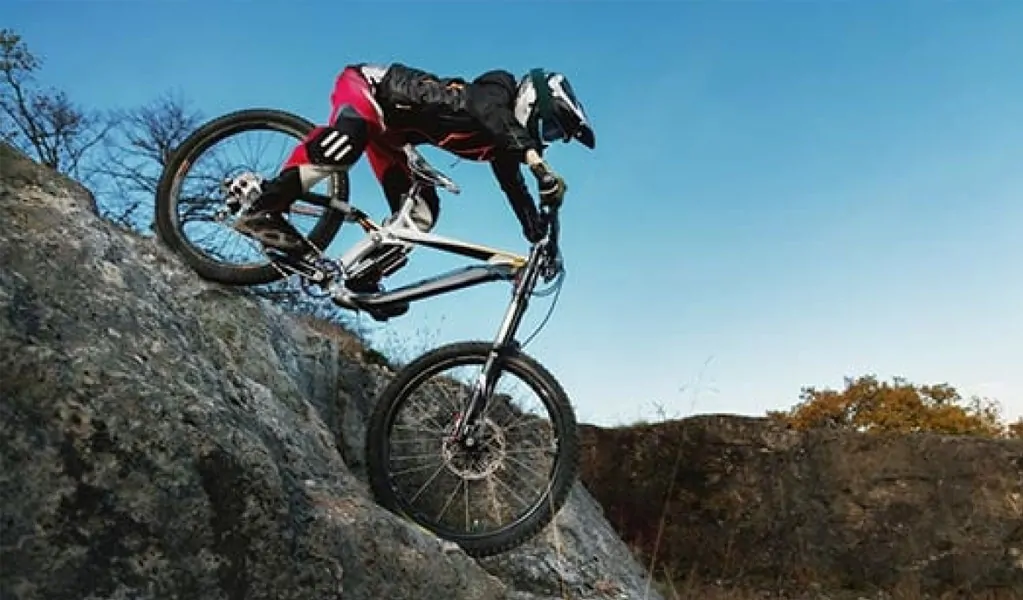
What is The Most Dangerous Sport?
Apart from these normal regular sports, there are some specific most dangerous sports which seem to be a bit dangerous outwardly but actually, they are the real bold games and sports.
We do not come across such fantastic moments quite often in our daily lives but keep on doing our normal chores which make our life monotonous and transform us into less adventurous and pains-taking persons.
Whether it’s the death-defying leaps of BASE jumping or the intense physical battles and mixed martial arts. An extraordinary blend of talent, bravery, and stamina is mandatory. The stakes are staggering, but so are the rewards. The satisfaction of conquering fear, pushing past limitations, and achieving the impossible keeps you going.
These most dangerous sports require a lot of valor, stamina, strength, mental force, and a sharp IQ level. These most dangerous sports teach their players a lot and inculcate such qualities in them as to be helpful in their personal grooming and daily life.
Some people are of the view that such dangerous sports are a great security risk and the players may lose their lives while playing. I think this is a pessimist approach and is a poor attempt to reduce the charm and spell of these sports. Moreover, life and death go hand in glove with each other.
Every living being is bound to die whether or not he is a part of these most dangerous sports. What a man can do maximum is sheer carefulness on his part and then he should leave everything up to God. He is the Creator who will take utmost care of His creatures and will protect them until the final time of their death destined to them.
So, it is very much advisable to take part and enjoy these most dangerous sports and improve your confidence and boldness, and then face real-life affairs with the same confidence and boldness with safety measures.
Statistics: Number of Sports Injuries by Age
Sports and recreational injuries have seen an increment by whooping 17% in just one year. In 2020, the sports and recreational injuries were reported at record low number, leading to an increased rate of 20% in 2021, 12% in 2022, 2% in 2023, and 17% in 2024.
Fore example, regarding to only exercise and exercise equipment injuries, a increment of from 482,886 injuries in 2023 to 564,845 injuries in 2024 have seen. The highest injury rate age group is 15 – 24 year old.
Approximately, 4.4 million people in 2024 were treated in emergency departments for sports and recreational equipment injuries. Most of the injury related activities includes exercise, cycling, and basketball.
| Sport, activity or equipment | Injuries (*) | Younger than 5 | 5 to 14 | 15 to 24 | 25 to 64 | 65 and older |
| Exercise, exercise equipment | 564,845 | 9,056 | 40,616 | 106,552 | 289,494 | 119,127 |
| Bicycles and accessories | 454,008 | 16,072 | 105,446 | 64,605 | 211,314 | 56,412 |
| Basketball | 385,777 | 1,584 | 128,395 | 176,752 | 76,644 | 2,402 |
| ATV’s, mopeds, minibikes, etc. | 312,924 | 4,197 | 59,126 | 81,427 | 149,753 | 18,393 |
| Football | 318,243 | – | 172,530 | 121,268 | 22,245 | – |
| Skateboards, scooters, hoverboards | 295,067 | 9,095 | 72,815 | 71,023 | 131,317 | 10,736 |
| Soccer | 265,761 | 2,031 | 124,958 | 91,215 | 46,390 | – |
| Playground equipment | 231,245 | 59,501 | 148,211 | 8,429 | 13,118 | 1,985 |
| Swimming, pools, equipment | 182,344 | 19,133 | 71,812 | 30,174 | 47,444 | 13,677 |
| Baseball, softball | 154,757 | 2,947 | 66,587 | 47,221 | 33,721 | 4,280 |
| Trampolines | 118,179 | 26,156 | 71,613 | 11,057 | 9,139 | – |
| Lacrosse, rugby, misc. ball games | 97,511 | – | 25,058 | 30,215 | 25,414 | 16,425 |
| Skating (excl. In-line) | 74,331 | – | 30,368 | 13,638 | 27,661 | 2,140 |
| Fishing | 73,812 | 2,184 | 17,538 | 13,885 | 31,676 | 8,529 |
| Golf | 72,026 | 2,062 | 7,741 | 8,288 | 24,670 | 29,266 |
| Volleyball | 65,440 | – | 20,638 | 30,457 | 13,013 | – |
| Horseback Riding | 48,521 | – | 7,466 | 11,595 | 21,908 | 7,032 |
| Hockey | 46,955 | – | 14,764 | 19,154 | 12,039 | – |
| Martial arts | 34,538 | – | 8,195 | 9,529 | 16,456 | – |
| Track and field activities, equipment | 31,940 | – | 10,486 | 15,079 | 5,542 | – |
| Beach, picnic, camping equipment | 30,738 | 3,641 | 4,686 | 1,432 | 13,543 | 7,437 |
| Racquet sports | 28,251 | – | 3,606 | 5,996 | 10,862 | 7,653 |
| Boxing | 25,863 | – | 2,785 | 12,297 | 10,696 | – |
| Water skiing, tubing, surfing | 17,264 | – | 2,912 | 4,666 | 8,782 | – |
(-): The injury cases are collected from hospital data samples. These injury cases usually have varying stats, explaining the raw numbers in comparative purposes should not be used.
Source: National Safety Council analysis of U.S. Consumer Product Safety Commission NEISS data. National Safety Council. Injury Facts®.
FAQs
The factors like high-speed movement, extreme physical demands, unpredictable environments, and a higher risk of death or injury, all these make a sport dangerous or risky. It may also have collision impacts, falls, extreme weather, or exposure to hazardous elements.
The 10 deadliest sports are:
Base jumping
Big wave surfing
Free solo climbing
Bull riding
Heli-skiing
Motorcycle racing
Wingsuit flying
Boxing
Cave diving
Mountaineering
Yes, most of these sports are regulated to some degree of safety. Governing bodies establish rules, require protective gear, and enforce safety protocols. However, the level of regulation varies by sport, and the inherent risk often cannot be fully eliminated, especially in extreme or adventure sports.
In the U.S region, the most dangerous sport is American football with highest injury rates due to frequent high-impact collisions. The injuries may like to range from concussions to fractured bones, particularly affecting the head, neck, and knees.
To stay safe, participants should:
a. Use proper safety gear
b. Receive adequate training and education
c. Follow regulations and best practices
d. Participate under the supervision of experienced professionals when necessary
Having the highest fatality rate, Base jumping is considered to be in the list of deadliest sports. A jumper jumps from a stationary object using a parachute to slow down his/her fall. Though, there is a minimum chance to make a mistake.
The most dangerous Olympic sport is freestyle skiing. It is considered to be the most dangerous one, as it has high-impact landings, crashes, and severe injuries from falls.
If an emergency occurs, seek help through:
a. Activating emergency communication devices (like a satellite phone)
b. Administering first aid if trained to do so
c. Stabilizing the injured individual
d. Contacting local rescue services or authorities for assistance
Cheerleading is one of the most dangerous sports for females, causing injuries including concussions, spinal damage and fractured bones.
Table of Contents
All sports and athletic activities count a lot and produce a very healthy influence on both body and mind, but most dangerous sports are really very much thrilling and inspire the players and viewers with such vigor and fervor as to be required to meet the real dangers of life.
Again, sports are also of various categories demanding different levels of physical and mental involvement both on the part of the players and the viewers. Some sports and games are regular, and everyone can play them according to the defined rules and regulations rather than most dangerous sports.
Such sports and games are very popular all over the world and their players and good performers are recognized and awarded at all levels. Besides, these sports carry equal weight in all the countries of the world.
Someone interested in the most dangerous sports in the world should think very carefully before engaging in activities.
References:
- U.S. Consumer Product Safety Commission (NEISS)
- CDC – National Center for Injury Prevention
- PubMed & NCBI Sports Injury Studies
- WHO Global Injury Reports
- National Safety Council (NSC)
- Federation Internationale de Gymnastique, FIFA, IIHF, and IOC reports
- Extreme Sports Safety Research (various, 2020–2024)









































@Ella
Stop going on and on about whiplashes and gymnastics. I do both gymnastics and horseback riding, but i’d say equestrian is more dangerous. I’ve been riding for about six years now, I’ve fallen off many times. There are more injures in gymnastics, I agree, but the incidents in horseback riding are much worse.
https://www.youtube.com/watch?v=Bk3vDlWPA_A
Have you seen Hurling?, might be a little bit more dangerous than pool maybe.
Hurling is for weak humans
I found your blog post about the most dangerous sports very interesting and informative. You have given me some insights and facts about the extreme physical and mental challenges that these sports pose. I like your photos and your descriptions of the different sports and their risks. I’m especially interested in learning more about BASE jumping and bull riding, as they seem to be the most thrilling and daring sports.
Yeah but horse back riding is still dangerous :/
On what are you basing your rankings? Why did you put horseback riding as the number one most dangerous sport, and boxing or football as number 9 and respectively, when the statistics don’t even come close to bearing that out? And you even list them!! Those sports are much more dangerous!!
I understand your concern! The ranking may depend on various factors such as injury frequency, severity, and long-term health risks. While horseback riding can have high injury rates, sports like boxing and football often involve more severe, life-threatening injuries. Different sources and studies may have varying criteria for ranking, so it’s important to consider all factors when comparing danger levels.
“Horseback” riding? I didn’t know you could ride a hose anywhere else 😂😂😂
Haha, good one! It meant “horseback” riding, not “hose.” Thanks for the laugh! 😄
High Altitude Trekking is one of the best adventures trek for me, thanks for sharing about this. I Love trekking and being from Great Himalayan region its love to connect with Adventures sports !!!
To all equestrians out there don’t you just hate it when people say that “horse riding isn’t a sport all you do is just sit there” like to me it’s so annoying!!
I totally get it! Horseback riding is definitely a sport—it takes skill, balance, coordination, and a deep connection with the horse. It’s not just sitting there; you’re actively guiding and working with the animal, which requires a lot of physical and mental effort!